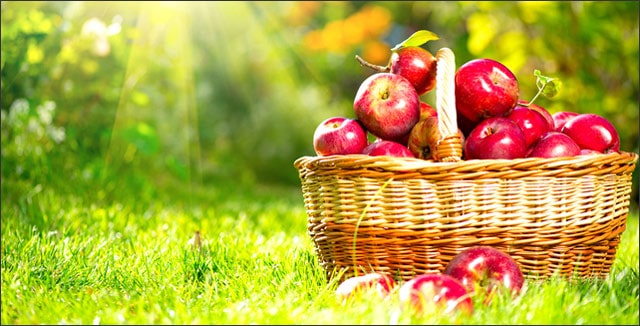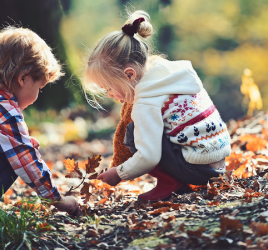2015 Dirty Dozen List and What You Need to Know

Throughout recent years, there has been a movement related to the food we eat. With the more information available that we as consumers have, we continue to grow in our understanding and education that helps us to make healthy food decisions.
Each year, the EWG investigates which fruits and vegetables have the most pesticides on them so as consumers, we can make the best decisions about foods we eat. The EWG’s goal is to make your food as transparent as possible. They created a Shoppers Guide to help consumers. Buying organic food is expensive, so knowing which foods are the most contaminated with pesticides might help you as you decide which organic foods to buy.
The EWG encourages people to choose organic whenever possible, but they know many people are on a budget. They ranked 48 different food and vegetables by the amount of pesticides found on them. They also listed the top 12 foods that are most impacted by pesticides. The list gives the consumer an idea of what items are best to avoid.
According to the 2015 Report, for the fifth year in a row, the apple topped the charts as dirtiest produce out there. However, the apple is surely not alone in the amount of presides they contain. According to EWG, “Nearly two-thirds of the 3,015 produce samples tested by the U.S. Department of Agriculture in 2013 contained pesticide residues – a surprising finding in the face of soaring consumer demand for food without agricultural chemicals.” EWG continued to state that USDA tests found a total 165 different pesticides on thousands of fruit and vegetables samples examined in 2013.
A Few Highlights from the Report:
- The average potato had more pesticides by weight than any other produce.
- A single grape sample and a sweet bell pepper sample contained 15 different pesticides.
- 99 percent of apple samples, 98 percent of peaches, and 97 percent of nectarines tested positive for at least one pesticide residue.
- Single samples of cherry tomatoes, nectarines, peaches, imported snap peas and strawberries showed 13 different pesticides apiece.
Source: www.ewg.org
The 2015 Dirty Dozen
- Apples
- Peaches
- Nectarines
- Strawberries
- Grapes
- Celery
- Spinach
- Sweet Bell Peppers
- Cucumbers
- Cherry Tomatoes
- Snap Peas (imported)
- Potatoes
The “Dirty Dozen Plus” includes:
- Hot Peppers
- Kale/Collard Greens
Why Does This Matter?
So why does the Dirty Dozen exist? What seems to be the big deal? Here are 5 key questions that you might have asked yourself already when it comes to this big topic of pesticides. While the research is still growing and we don’t know everything about pesticides, we can gather known studies and research to begin to get a clearer picture of how much we are impacted by pesticides.
- Why All the Big Hype About Pesticides?
Have you ever wondered what the big deal is with pesticides anyway? According to the EWG, “Pesticides are toxic by design. They are created expressly to kill living organisms — insects, plants and fungi that are considered “pests.”’ While preventing these “pests”, it is known to be harmful to humans when eaten. Independent research scientists and physicians across the world have confirmed these risks. Pesticides have been linked to:- Brain and nervous system toxicity
- Cancer
- Hormone disruption
- Skin, eye and lung irritation
- Pesticides Can Be Found in Your Body
According the Centers for Disease Control and Prevention’s national biomonitoring program, pesticides have been detected in blood and urine samples from 96 percent of more than 5,000 Americans age 6 and older (CDC 2009b). - Should you avoid Conventional Fruit and Vegetables?
Eating fruits and vegetables are a vital part of your diet. When we evaluate pesticides it can feel like making a choice of not eating fruits and vegetables conventionally grown should be avoided at all cost. However, it is still a better food choice to eat conventionally grown fruits and vegetables over processed foods. The health benefits of eating fruits and vegetables out weight the impact of pesticides. - Shouldn’t Washing or Peeling Help?
It would make sense that you would assume that washing an apple or peeling a banana might change the amount of pesticides that are contained in the produce, however, it is important to know that is not the case. The data that the EWG used to create the Shoppers Guide, is based on eating the produce how eat it normally. For example, nectarines are normally washed and therefore that was how they were tested. That is why it is extremely important to note that ingesting a fruit or vegetable not washed will contain much higher amounts of pesticide then this list notes. - What is the Shoppers Guide?
The Shoppers Guide is data that was collected and laboratory tests done by the USDA Pesticide Testing Program and the Food and Drug Administration. - Does Eating Organic Make a Difference
Chensheng Lue of Emor Univeristy did a study on elementary school- age children. He found that the children’s levels of pesticides peaked in the summer when they tended to eat the freshest produce. He found that just switching to an all-organic diet, their bodies became essentially pesticide-free (Lu 2006).
Take Away
As consumers, we want to make the healthiest choice for ourselves and our families. When it comes to our produce, we want to ensure that what we are consuming is as healthy and rich as it was meant to be.
Pesticides are being used to protect crops from pests, but in the process, can be added harm to those that consume the produce. With the report from EWG, as consumers, we are gaining a better understanding of our favorite produces.
While we know that it is important to eat mostly organic, most budgets don’t always allow for the high prices of organic. Knowing “The Dirty Dozen” gives us a helpful tool to know which fruits and vegetables should be avoided if possible.
So the next time to go to the grocery store, think about picking up a bag of organic apples instead of the non organic ones.
You can also choose to grow your fruits and vegetables organically. For tips on how you can do this, please see our Organic Gardening category of “how to” articles.

